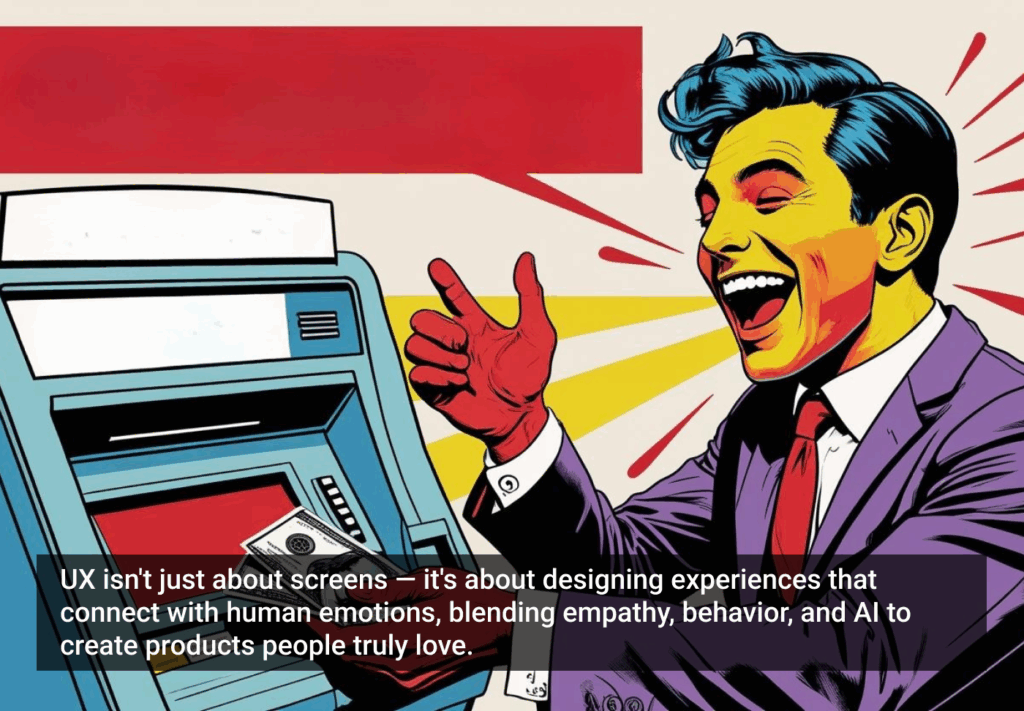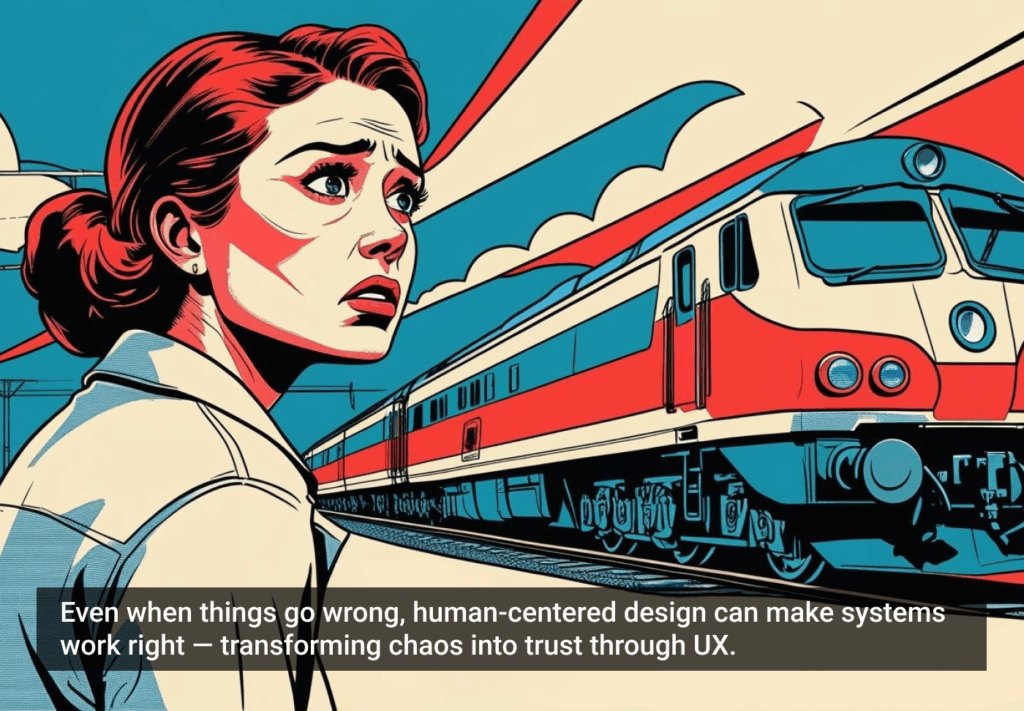The problems we’re being asked to solve are changing. It’s less about helping partners innovate in incremental ways, and more about big transformational shifts in how we live and work. Two of those shifts: generative AI, and our rapidly changing climate.
Together, these two forces are moving both the people’s side of the equation—what we need and how we behave—and the how side of design: what’s possible.
Welcome to the Climate Era
A new age is upon us. Steam propelled the original Industrial Revolution; electricity powered the second; preliminary automation and machinery engineered the third; and cyberphysical systems—or AI-powered computers—are shaping the Fourth Industrial Revolution.
But the universal context is our climate. The Climate Era is our time-windowed opportunity to reverse the costs of the industrial and digital eras—creating a more abundant future for all. The way through it is to find ways to reinvent our economies, in part by turning necessary choices (like conservation and circularity) into desirable ones.
To the degree that the climate crisis can be solved, we already have solutions and technologies. The central question of the Climate Era is not can we do it? It’s will we do it?
Hello, generative AI
If the challenges of the Climate Era have been building up over centuries, the transformative power of generative AI seems to have hit the world in a flash.
And this is a critical moment to interrogate our relationship with technology. At IDEO we do that through the tools and habits of design: building to think, taking time to understand people deeply, investigating the farthest consequences we can imagine, and embracing new skills, disciplines, and ways of being in the world through experiments.
Combined forces
These two forces—AI and the Climate Era—have the potential to change everything for everyone. And in some ways, they already have. More often than not, AI and Climate thought live in different conversations. But what might happen when they’re brought together?
The pull of personality
Here’s an example of how AI might help us be climate-friendly manufacturers and consumers: It can help you get to know your clothes before you buy them.
We want and we need to build a circular economy. But its biggest challenge is scale: getting to the necessary infrastructure and processes, and—maybe the most challenging—getting enough people to participate.
There are signs of shifts at the policy level: You see it in Europe, for example, where the EU has a regulatory framework to promote (and require) circular behaviors from both businesses and consumers alike. And more and more people are participating in circular-like ways, such as thrifting. We see younger consumers pushing brands to become more active in developing and promoting sustainable versions of their products (so long as they’re not more expensive).
All that made us think about a pair of jeans.
Jeans lack the physical traits necessary for conversation. But, for an exhibit of speculative design at IDEO, we imagined them capable of communication.
For starters: We might ask the jeans about their (un)life story, what went into their creation, or how they like to be treated. We might learn about where they were manufactured, their previous owners, and how to fix them if they ripped. Knowing all this about your jeans would give you a much better sense of whether they were a good fit.
Through AI, all of us will soon be conversing regularly with non-humans. And what else might “speak” through AI? Vehicles that remind us that they’re happier when filled with passengers and bound for the carpool lane?
Speaking for the trees
Most of the sustainability problems we seek to fix were created in the design and strategy choices that were made early on in a product’s journey. The lifecycle analysis is a robust process. But it’s costly and generally retrospective, analyzing only those products and practices that already exist.
What about when we’re exploring different potential options and what could be, not what is?
AI can help us incorporate a real sense of the “true cost” of a product and give nature a seat at the table early on. AI that draws on scope 1,2, and 3 datasets could help protect nature’s best interests in the decision-making phase. To be credible and useful, such an AI would need to synthesize scientific data, cultural data, and archives of experiments. And it would need to have some ability to understand the ground truth of things: learning from both human and technical inputs how things really are, right now, in the soil, in the ocean, in the community, and on and on.
With such a nature-centered AI in play, deployed ethically, we can imagine it occupying different roles and settings. As an advocate in the boardroom (where it might pose strategic questions or even cast a vote), or as an inventor in the materials lab (where it might suggest radically more sustainable ways to use resources and optimize production).
Everything in play
When we talk about making great choices in the Climate Era, especially at the policy or regulatory level, we’re talking about something unbelievably complicated. There are so many factors to consider, in so many dimensions.
And AI can help us think systemically. Take something like fishing. To regulate it, we need to understand the immediate economic impact (such as business profit); the effect on communities and livelihoods; taxation and employment; the effect of granting more or fewer fishing licenses; how to balance production and protection of spawning areas); and biodiversity. AI can synthesize all of that information and data and make suggestions that expand our imagination about what’s possible.
Another thing artificial intelligence has a knack for is running simulations. What if AI could help you simulate the tradeoffs among biodiversity, job creation/local livelihoods, and business success?
We imagined this kind of thing in a piece of work with our friends at Conservation International.
A simulation is often quite technical, and AI is already great at that. But we can also imagine an AI pushing people to consider their choices in other ways. What if it could point you to the right humans, on island nations, for example, to enrich your understanding of potential impacts, far beyond your own frames of reference?
The age of transformers
There are so many ways the Climate Era and AI, two transformative forces, might collide in service of building better futures. We picked out just three:
• Driving consumer adoption and adaptation by making things that are better
• Optimizing and reimagining production by giving nature a voice and a seat at the table
• Radically reworking how we make climate choices, especially at the largest scale
But, of course, they’re not the only transformers at work. We are, too. Especially those of us in positions of power and influence.
The Climate Era is here.
The Age of AI has arrived.
And it’s still our world to make and remake—for the better if we choose.
For the full story, click here.
This article is adapted from a session delivered by IDEO in NYC at the 2023 FastCo Innovation Festival. With editing support from Christina Drill.
Words by Savannah Kunovsky, Alex Gallafent, and Bryan Walker & Visuals by Stephanie Sizemore








